¶ Introduction
Distance Measuring Equipment (DME) is defined as usually coupled with a VOR or an ILS beacon to enable aircraft to measure their position relative to that beacon.
Distance Measuring Equipment (DME) is defined as a combination of ground and airborne equipment which gives a continuous slant range distance-from-station readout by measuring the time-lapse of a signal transmitted by the aircraft to the station and responded back.
DMEs can also provide groundspeed and time-to-station readouts by differentiation.
¶ DME ground equipment
DME ground and on-board equipment use the UHF radio frequency band between 962MHz and 1213MHz.
An aircraft can compute its distance to the beacon from the delay of the signal perceived by the aircraft's DME equipment using the speed of light.
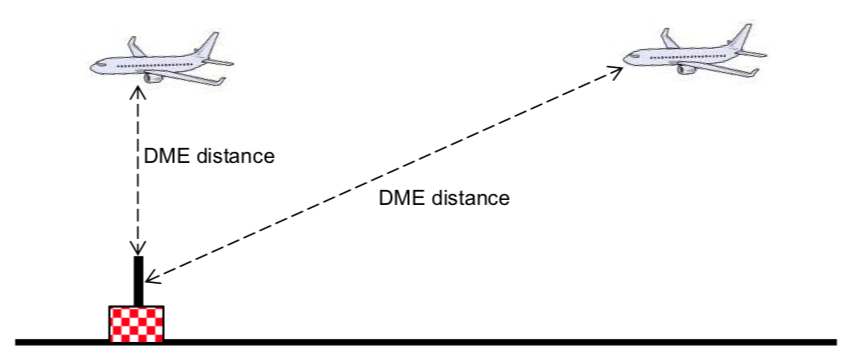
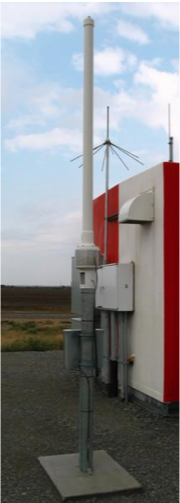
The distance measured by the aircraft is the direct path between the aircraft and the antenna of the DME. It is not the ground distance!
When an aircraft is above the DME, DME indicates the height of the aircraft and not zero.
DME works like a receiver and re-emitter like a transponder:
- The aircraft transmits a paired pulse spaced about 12μs or 36μs on the UHF frequency.
- The DME on the ground receives it and transmits with a constant delay of 50μs on an UHF frequency (with ± 63 MHz offset) a paired pulse spaced 12μs or 36μs
- When 50% of the signals emitted have been received by the aircraft's receiver, the aircraft instrument can compute the signal in order to find the propagation time, and then calculate the distance.
The aircraft has also two modes for DME tracking: one for searching the station and another for tracking the station using fewer signals.
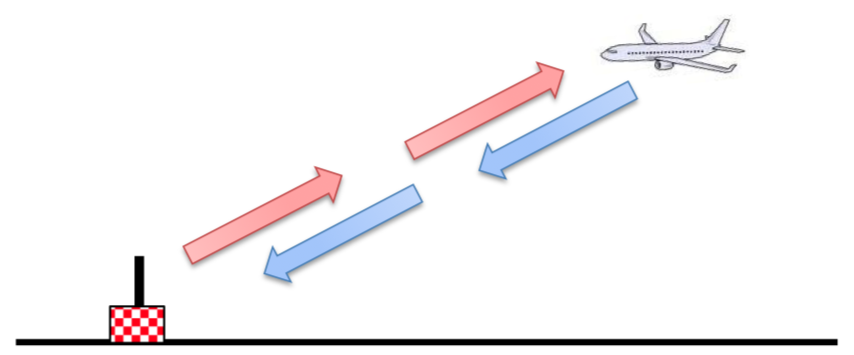
The need of bilateral communication between the base DME station and aircraft implies that the DME station has a limit of about one hundred aircraft in order to prevent the overload of the station. The DME station will adjust its receiver sensibility in order to filter the furthest aircraft.
The precision of the measurement is 0.25 NM ± 1.25% of the distance calculated.
¶ DME on charts
The symbol of the DME radio navigation beacon on charts is usually a square.

Associated with the DME figure, you can have additional information written in a rectangle:
- Full clear name of the DME
- Frequency in MHz and/or DME channel
- 3 letter call sign of the DME
- Morse code of the call sign
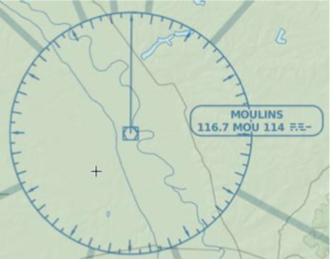
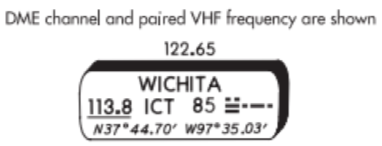
- None
- None
- VID 150259 - Creation
- VID 450012 - Update
- VID 496402 - Wiki.js integration